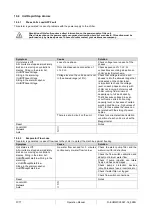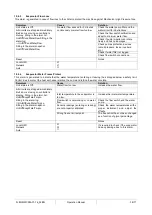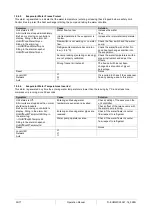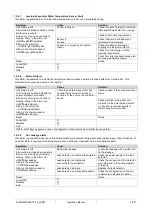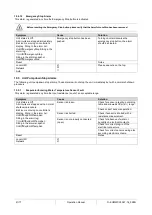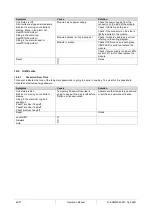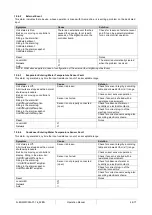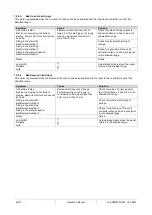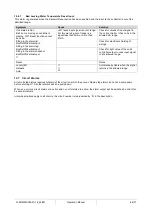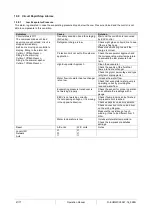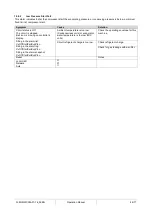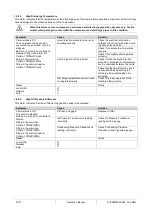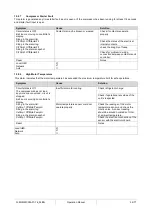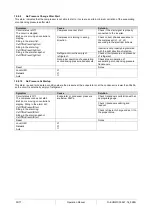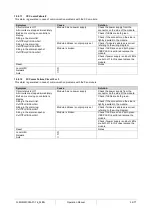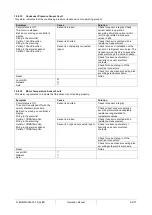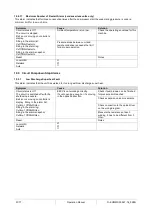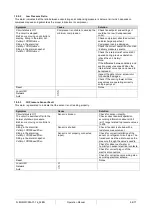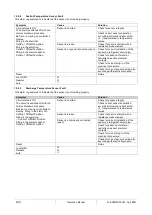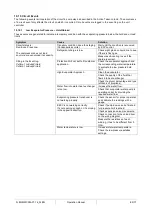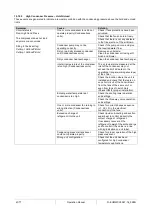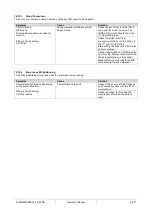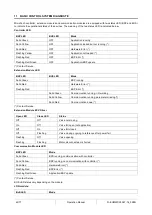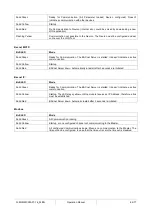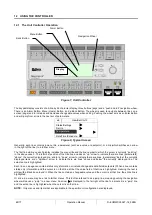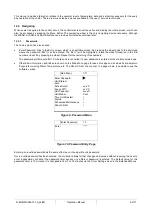
51/77
Operation Manual
D
–EOMWC00A07-16_02EN
10.8.5
High Discharge Temperature
This alarm indicates that the temperature at the discharge port of the compressor exceeded a maximum limit which may
cause damages to the mechanical parts of the compressor.
When this alarm occurs compressor’s crankcase and discharge pipes may become very hot. Be
careful when getting in contact with the compressor and discharge pipes in this condition.
Symptom
Cause
Solution
Circuit status is Off.
The compressor does not load
anymore or even unload, circuit is
stopped.
Bell icon is moving on
controller’s
display. String in the alarm list:
CxCmp1 OffDischTmpHi
String in the alarm log:
CxCmp1 OffDischTmpHi
String in the alarm snapshot
CxCmp1 OffDischTmpHi
Liquid Injection solenoid valve is not
operating properly.
Check the electrical connection
between the controller and the liquid
injection solenoid valve.
Check if the solenoid coil operates
properly.
Check if the digital output operates
correctly.
Liquid injection orifice is small.
Check if when the liquid injection
solenoid is activated the temperature
can be controlled between the limits.
Check that the liquid injection line is
not obstructed by observing the
discharge temperature when it is
activated.
Discharge temperature sensor could
not operate properly.
Check for proper operation of the
discharge temperature.
Reset
Notes
Local HMI
Network
Auto
10.8.6
High Oil Pressure Difference
This alarm indicates that the oil filter is clogged and needs to be replaced.
Symptom
Cause
Solution
Circuit status is Off.
The circuit is stopped.
Bell icon is moving on controller’s
display.
String in the alarm list:
CxCmp1 OffOilPrDiffHi
String in the alarm log:
CxCmp1 OffOilPrDiffHi
String in the alarm snapshot
CxCmp1 OffOilPrDiffHi
Oil filter is clogged.
Replace oil filter.
Oil Pressure Transducer is reading
incorrectly.
Check Oil Pressure Transducer
readings with a gauge.
Condensing Pressure Transducer is
reading incorrectly.
Check Condensing Pressure
Transducer readings with a gauge.
Reset
Notes
Local HMI
Network
Auto

